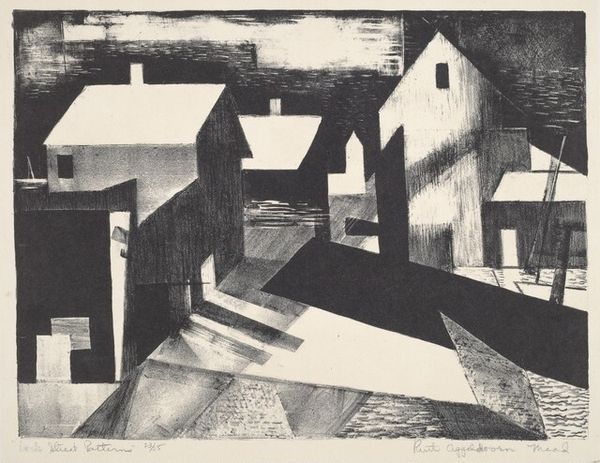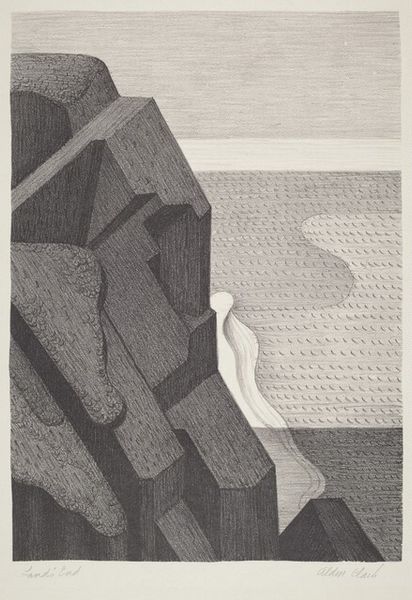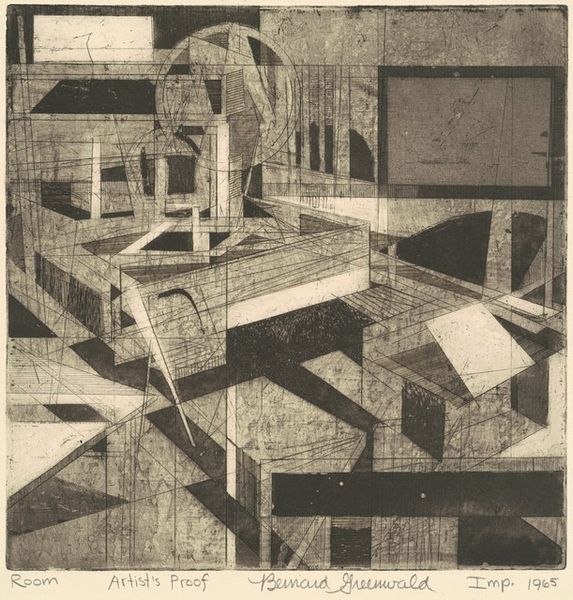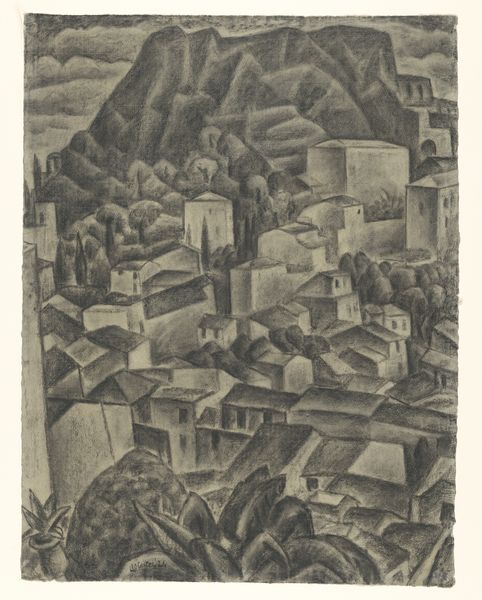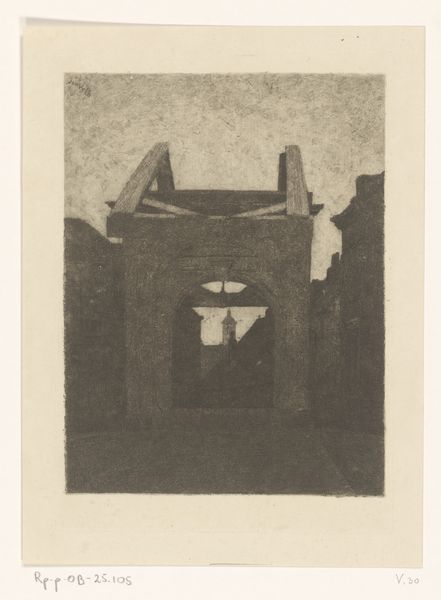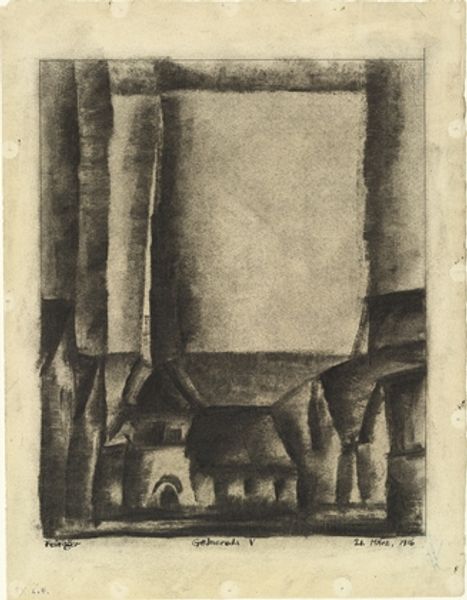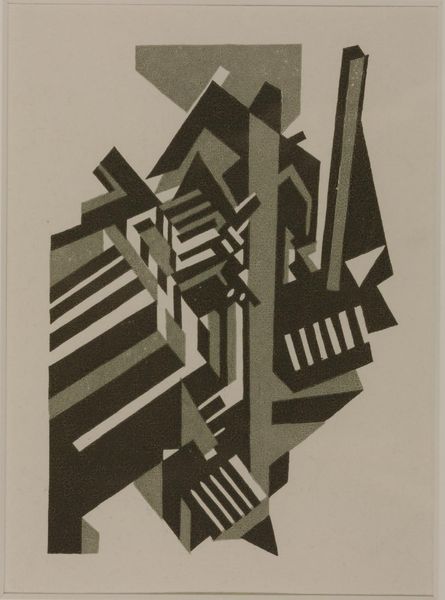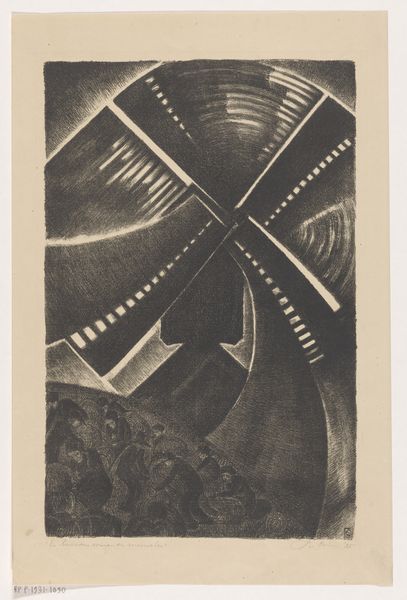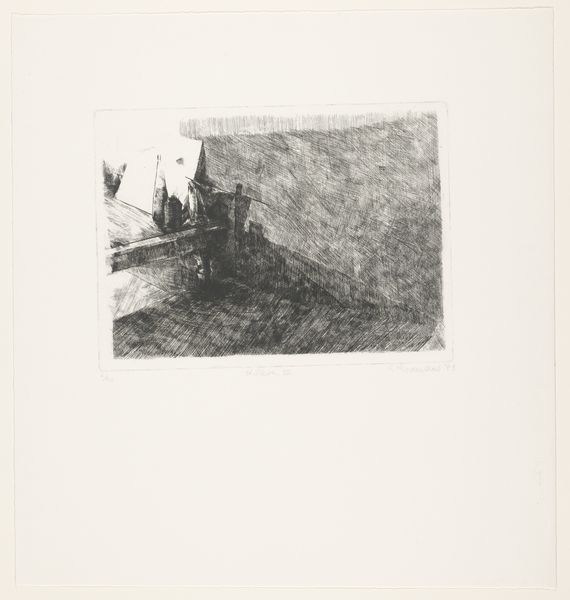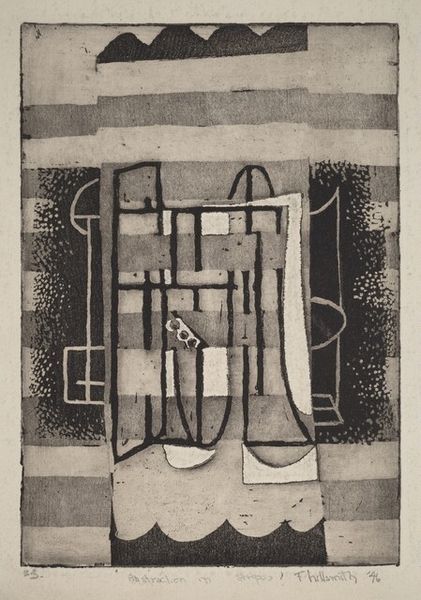
print, etching
# print
#
etching
#
landscape
#
cityscape
#
italian-renaissance
#
realism
Dimensions: height 249 mm, width 177 mm
Copyright: Rijks Museum: Open Domain
Editor: This print, "Antieke muur te Florence," or "Ancient Wall in Florence" by Nella Pucci, probably made sometime between 1898 and 1935, is an etching that depicts, well, an old wall in Florence. The scene is filled with shadows. What historical context might illuminate our understanding of this print? Curator: It’s crucial to remember that this was a period of intense change and modernization in Italy. The late 19th and early 20th centuries witnessed rapid industrialization alongside a burgeoning sense of national identity, a search for roots. How does Pucci's rendering of this "antique wall" seem to either embrace or resist that modernization? Editor: That's interesting, because I see almost a sense of decay or even defiance in that isolated wall amidst what looks like urban sprawl in the background. A sort of romantic ruin against urban encroachment, maybe? Curator: Precisely. Etchings like these, which found popularity amongst a rising middle class eager to acquire cultural capital, also participated in creating, standardizing and then circulating these images of Italy's cultural heritage. To what extent do you feel Pucci romanticizes this heritage, or critiques the rapid changes Florence was undergoing? Does it feel propagandistic? Editor: I don't see anything necessarily critical here, nor glorifying for that matter. More like it's simply preserving this memory as Italy transitions. Like documentation. I do like how the lines making up the shading really contrast the roofs and trees in the distance. Curator: An astute observation. Perhaps Pucci saw this "ancient wall" as more than just a historical artifact, but as a reminder of the values and traditions that shaped Florentine identity during times of rapid industrial development and urbanization. Editor: That makes me see this print in a new light; it feels almost like a historical preservation effort through art, documenting these locations as Florence evolved. Curator: Yes, that tension between preservation, documentation and romanticisation – or nostalgia – is so typical of this period, and so evident in Pucci’s print. It also highlights the ongoing negotiation between cultural memory and socio-political progress.
Comments
No comments
Be the first to comment and join the conversation on the ultimate creative platform.
